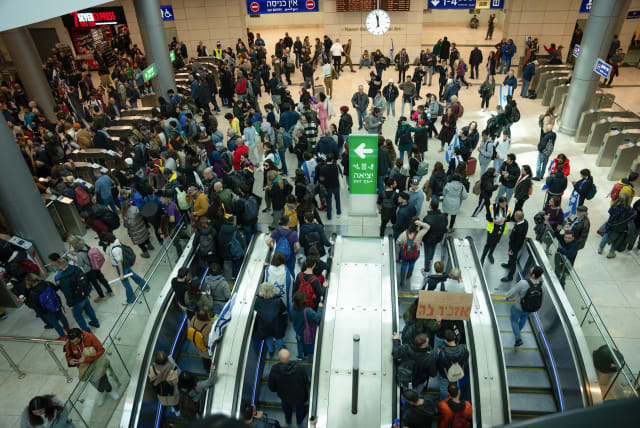Post-COVID pandemic traveling fear and what to do about it

Most people gradually overcame their worries about venturing out to the world again, but some are still so traumatized by COVID.
The weather is warming up, and summer will soon be here. It’s so nice to hear that the airline and tourism industries are beginning to rebound from the downturn caused by the COVID pandemic. Lots of people have already returned to traveling and flying on planes. Unfortunately, for some, they are still emotionally locked down and are fearful of getting sick.
Many of these people are avoiding crowds, and some have even become agoraphobic and are remaining in their homes. Freud described these feelings as “reiseangst,” from the German for “travel fear.” The fear of travel is listed in the Diagnostic and Statistical Manual of Mental Disorders as a specific phobia and referred to as hodophobia. Experts explain that it is not surprising that some people would develop this phobia after the trauma of the pandemic and the messaging that staying at home is the safest place to be.
Most people gradually overcame their worries about venturing out to the world again, as the numbers of infected COVID people decreased worldwide and health officials gradually lowered the risk factor. Today, you rarely see people wearing protective face masks. What concerns me as a therapist is that some individuals are so traumatized by their worries about contracting the virus that they can’t get themselves to overcome their need to avoid crowds. They stay in their homes and are obsessed with worry, in spite of the fact that the world is returning to a pre-pandemic behavioral pattern, both socially and at work.
Ellen is a 29-year-old single woman living with her divorced mother. Throughout the pandemic, Ellen did most of her work online. However, her company has asked her to travel, and she is paralyzed with fear about getting back on an airplane and leaving the security of her home.
Ellen sought my help because she felt that she would jeopardize not only her job but also her social life, which had been put on hold during the pandemic. She was very lonely and really wanted to meet someone, and that required getting out and getting around.
In addition, Ellen said that her mother was very anxious about getting COVID. And she was terrified that if Ellen left the house, she would get the virus and infect her with it. Ellen could not shut off her mother’s anxieties, which became her own inner voice.
Interventions to help overcome COVID pandemic travel fear
BELOW ARE several interventions that I used to help Ellen overcome her problem.
Expression; validation of Ellen’s fears
Ellen requested that the therapy be conducted online. She was encouraged to describe to me what she was afraid of when she thought about going out of her home.
She understood intellectually that her worries were irrational. After all, she stated, all her friends and work colleagues had resumed most of their pre-pandemic life and routines.
She was being asked to return to her office at least part time. Until now, she was able to convince her manager to allow her to continue her work from home, but this would have to change.
Clearly, Ellen needed some distance from her mother, who was projecting her anxiety onto Ellen.
I listened and empathized with Ellen’s difficulties, while at the same time I commended her desire and motivation to make a change.
Relaxation and stress reduction techniques
Fear is associated with hyperarousal and adrenalin. Ellen spoke about how difficult it was for her to relax. I suggested that the first thing we needed to do was to help her relax.
One of the most powerful and immediate techniques for calming oneself when stressed or anxious is deep breathing. The procedure instructs a person to take a deep breath through the nose (four counts in), four counts holding, and releasing one’s breath through the mouth with a four count. Repeating this breathing exercise several times is suggested.
Visualization exercises are also very helpful in getting someone to change stressful or fearful thoughts.
In Ellen’s case, she kept imagining herself becoming very ill with COVID and/or losing her job and becoming a poor, homeless person. I told Ellen to try to imagine herself climbing a mountain or taking a bike ride on a beautiful day. Ellen had told me that she used to love to do outdoor sports. She was able to close her eyes and visualize these scenes. The visualization exercise gave Ellen the badly needed emotional escape from her worries.
Next, I taught Ellen the progressive muscle relaxation exercise. Progressive muscle relaxation involves guided instruction that directs a participant to contract a muscle group and hold it for five to 10 seconds while taking a deep breath. This is followed by a slow exhalation with the focus on releasing the contracted muscle, with the aim of releasing the body tension during exhaling. The goal is to go through all of the muscle areas of the body from head to toe.
Exercise
Knowing that in her pre-pandemic days Ellen liked to exercise, particularly taking walks or biking, I encouraged her to get that started again. At the beginning, she was instructed to do exercises indoors, such as aerobics, yoga and stretching. It is well known that exercise stimulates chemicals that lower anxiety (decrease levels of cortisol) and improve mood (serotonin and endorphins).
Exposure therapy
An evidence-based treatment, exposure therapy has proven to be highly effective in treating problems including anxiety, stress and panic disorders. There’s a wide range of exposure therapy methods, which psychologists tailor to a patient’s situation.
Ellen needed to get out of the house. The idea here is to identify what the core fear is – Ellen was petrified of getting deathly ill from COVID. The goal was to design a sequence of activities that could slowly help Ellen approach that fear at her own pace.
Ellen was encouraged to go to nearby locations, like the neighborhood park. I told her that it was okay if she wanted to wear a mask. There were many exposure places that we identified, and for two weeks Ellen went to these locations.
I instructed her to write down any catastrophic thoughts she would have while going to these places. Cognitive therapy was used to help her challenge and confront her irrational thoughts and to help her to see the experience more rationally.
It was a gradual journey for Ellen, but over time she started to build up more and more confidence. She started to get together with friends, first wearing a mask but eventually removing it. Ellen continued to use the stress reduction techniques that I had taught her, combined with exercise. It was a challenging journey, but two months after starting treatment, Ellen was able to return to work and eventually to fly on planes.
There are many people like Ellen who suffer quietly. There is no shame in being afraid. Ellen was courageous enough to confront her fears and get the help she needed.
The writer is a marital, child and adult psychotherapist, practicing in Jerusalem and Ra’anana, and also provides online videoconferencing psychotherapy globally. drmikegropper@gmail.com
Jerusalem Post Store
`; document.getElementById("linkPremium").innerHTML = cont; var divWithLink = document.getElementById("premium-link"); if (divWithLink !== null && divWithLink !== 'undefined') { divWithLink.style.border = "solid 1px #cb0f3e"; divWithLink.style.textAlign = "center"; divWithLink.style.marginBottom = "15px"; divWithLink.style.marginTop = "15px"; divWithLink.style.width = "100%"; divWithLink.style.backgroundColor = "#122952"; divWithLink.style.color = "#ffffff"; divWithLink.style.lineHeight = "1.5"; } } (function (v, i) { });

